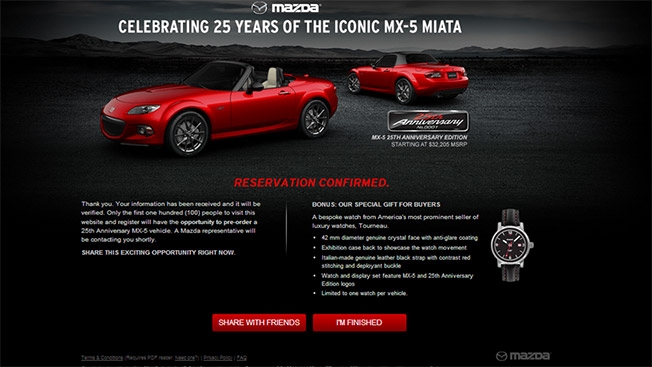
An aligned customer-centric marketing strategy is no longer a luxury, it is a must. Remarkable communication and an aligned customer experience takes effort and asks for the right tools.
What should Marketers, CMOs and CTOs demand from a capable marketing software platform?
Every customer communication counts
Often friends and co-workers ask their peers what they think of a company when deciding to buy. Word-of-mouth and customer testimonials are strong influencers. Marketers know that every interaction during the customer’s path to purchase is important.
A brand that misaligns their communication creates uncertainty in a customer’s mind. Conflicting ideas creates cognitive dissonance in the buyer’s mind, which does more bad than good, so we need to be able to deliver on customer-centric communication.
A focus on customer-centric communication leads to implementing:
- Customer Relationship Management (CRM) software to capture, store, and share customer data with internal departments to process and analyze.
- Multichannel Marketing that lets consumers choose their preferred communication channel, content, and timing. A brand can then create meaningful customer journey experiences.
- New Marketing Positions with the titles ‘Chief Customer Officer’ and ‘Senior Director of Customer Experience’. Companies assign responsibility to employees for optimizing all customer touch points from the moment they hear about the brand until they become loyal brand advocates.
Conducting my own research
I cannot help but evaluate my daily interactions with businesses. Top of mind is a personal case study, a mixed review was of my auto dealership.

The good
I am pleasantly surprised by how entrenched the dealership is in social media and its assertiveness in asking for personal recommendations. They send requests frequently through direct mail postcards – with a QR code to get online quickly to a variety of review sites including cars.com, Yahoo!, and Yellow Pages, and an email with a link to the dealership’s Google plus page.
Encouraging customers to participate in ratings and review sites is an excellent strategy. Research from Nielsen shows 68% of consumers trust customer opinions posted online.
The bad
My monthly car loan statement on the other hand is informative, but not personalized. The part with “Opportunities for You” often has offers that don’t apply to my situation. For example, in my May bill, the copy encouraged me to test-drive the latest model of its roadster.
From an overall branding strategy, I appreciate the emphasis on this national campaign. However, for a customer who has purchased a seven-passenger crossover SUV, this is not well-suited offer.

Executing a coast-to-coast campaign on every communication channel can be a risky strategy. In the billing statement example above, the message represents proof of purchase. As customers we demands a higher level of personalization to feel valued. Conversely, a customer who is a social follower of the brand anticipates and gladly accepts global news updates posted on sites such as Facebook, Google+ and Twitter.
Looking at customer experience management CXM)
Chuck Schaeffer, CEO at Vantive Media, states that:
“Customer Experience Management includes both the individual experience in a single transaction as well as the sum of all experiences across all touch points and channels between a customer and a supplier over the duration of their relationship”
The latest marketing strategy to meet the higher expectations of customers is Customer Experience Management (CXM). Effective implementation of a CXM strategy requires a combination of cross-functional teamwork. Add shared access to the data warehouse(s) and digital communication technology with: marketing automation, customer segmentation, and multichannel communication delivery.
Avoiding marketing mayhem
Sure it would be ideal to have a single multichannel marketing platform to manage all channels. The reality is that consumer behaviors and preferences are changing too fast for marketing software vendors to keep up. Some will quickly deliver new channels, but in their haste, they may create shortcuts using specialized data structures or acquire the technology not in its area of expertise. The result is an unfamiliar user-experience and features that can’t be integrated easily with a brand’s other best-of-breed marketing systems.
Ascend2 Marketing Automation Benchmark Survey (July 2014) found that 34% of marketers felt an “all-in-one tool” was the most important factor in choosing a marketing automation system.
Look for these 3 fundamental functions
Marketers, CMOs and CTOs have to consider the following three integration capabilities from an Email Service Provider’s technology platform.
1. Marketing automation and data coordination
A CXM strategy requires brands to consider all of their offline and online customer touch points. For most their website will be the main hub for all information. The customer data and web analytics collected links to an Email Marketing Automation platform to fuel all of the brand’s campaigns. Including nurturing, onboarding, upselling and retention campaigns. Results are shared with a lead scoring system or CRM (e.g. Salesforce.)
An ESP, with capabilities to hand over customer data easily to a marketing data warehouse or downstream to a CRM, will let companies enhance and update customer account records in real-time. The freedom to share data with other business units empowers marketers to view a customer’s unique journey and improve the overall customer experience.
Adding an umbrella data warehouse to capture all customer interactions through multiple channels and with various departments delivers better analysis, insights, and reporting of customer behaviors. With this knowledge, organizations can respond quicker to changes in consumer preferences. The net result is that marketers communicate with brand consistency in value proposition, vision, and voice.
2. Personalization by way of segmentation
Data is only valuable if it’s used and used correctly. This requires careful campaign planning and focus on the entire customer lifecycle. After knowing its customer personas, a marketing team can select suitable contacts, map out a message’s timing, and assign content to ensure the conversation is relevant.
The messaging platform must be able to customize customer attributes for campaign segmentation. These can include; customer behavior, buying stage, preferences (e.g. products, content, frequency, and channel), transaction history (RFM), and endemic 3rd party data.
With that in place a marketer can drive more people through the sales pipeline and increase the velocity of them moving through each stage.
3. Multiple push marketing channels
The majority of organizations choose to implement the best-of-breed solution over a single solution. Yet, there is no shame in moving towards a single solution. Companies are always looking for a more efficient way to do business.
Marketers understand the 5 rules to relevancy (channel, content, message, person, and time) needed to achieve success, but there are times that a brand needs to send the same message to a group of customers by their preferred communication channel (i.e. email, SMS, or mobile app push). Look for an ESP that permits choices beyond sending email.
Summary
Marketers today don’t have the option of working without quality data, executing multichannel communications, and discovering customer insights from real-time analytics. Otherwise these brands will quickly lose customers to competitors that anticipate a buyer’s needs and hold personalized conversations.
When creating an RFP for your next ESP, look if they can integrate with your existing data warehouses, transfer customer data for bottomless segmenting, and streamline your message production to send more than just email.
Images via Viktor Hanáček (cc)
